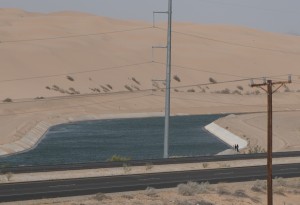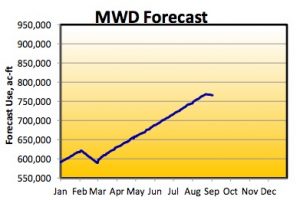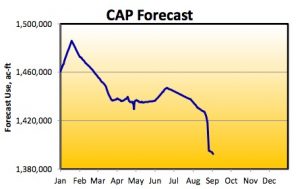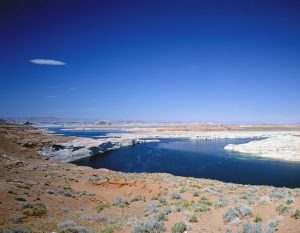Putting together a lecture for University of New Mexico Water Resources Program students tomorrow, I’ve been thinking about this quote from MWD’s Bill Hasencamp, in last week’s LA Times:
“Basically, what the models say is that, in the future, most years will be shortage years,” said Bill Hasencamp, the manager of Colorado River resources for the Metropolitan Water District of Southern California. “Shortages are going to be a way of life.”
“Shortage” here has a very particular technical meaning, but it also carries some interesting baggage in terms of how we as a community think about the water supplied by the river we share.

All-American Canal passing through the sand hills west of Yuma, March 2014 by John Fleck
The technical meaning is a reduction in the allocation of water under the U.S. Supreme Court’s 1963 decision in the case of Arizona v. California. The court interpreted the law governing the distribution of the river’s water to mean that California was entitled to 4.4 million acre feet per year, Arizona 2.8 million acre feet, and Nevada 0.3 million acre feet, for a total of 7.5 million acre feet.
The rules weren’t terribly clear about what happened when there was not enough water to do that, or even what “not enough water to do that” might mean. As long as there was water in Lake Mead, everybody could in theory get their full allotment until Lake Mead was sorta empty, and then suddenly we would be in huge trouble. It seemed reasonable to come up with some rules to start early slowing the decline of Lake Mead rather than waiting until it was empty, so in 2007 everyone packaged up some new rules to offer some clarity, the “interim guidelines” (big pdf). They defined “shortage” in terms of the amount of water in Mead on Jan. 1 of any given year. Below 1,075 feet in elevation is “shortage”, and downstream users have to take less than the full amounts laid out in AZ v. CA.
That’s the way Hasencamp is using the word. There’s less water in the river than AZ v. CA allocated, so most years in the future Mead will hover below 1,075, according to the models, and we’ll be in “shortage” most of the time. I don’t fault Bill for using the word – “shortage” is both technically correct, and Hasencamp is using it in a way that sends an important message.
But “shortage” carries some baggage. My big Random House defines it as “a deficiency in quantity”, which implies that we really need the full amount and in shortage we just have to get by with less. Embedded in the language we’re using is the notion that the right and proper way of things is lots water, and the current not-lots-of-water state is some sort of aberration. The core of the argument in my book is that our adaptive response to having less water is finding very successful ways to use less water. Because that seems to be the way it’s going to be, as Hasencamp so clearly explains. Less water is the norm, not an aberration.
We need some more neutral language to describe this future.
Suggestions welcome.





